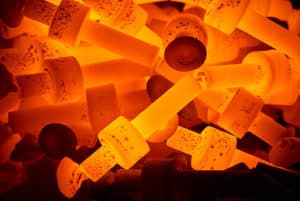
As a result, various industrial applications use this type of blanket due to its excellent thermal resistance and insulation properties. However, without proper anchoring, these blankets may become ineffective and fail to provide the desired insulation performance.
Ceramic fiber insulation blankets are typically installed in environments with high temperatures and extreme conditions. The anchors ensure the stability and integrity of the blanket by holding it firmly in place. This prevents any movement or displacement that can compromise the effectiveness of the insulation and potentially lead to heat loss or equipment damage.
High-temperature environments often cause metals and other materials to expand and contract. These important anchors are designed to accommodate this thermal expansion, allowing the blanket to expand and contract without losing its structural integrity. This ensures long-term performance and minimizes the risk of damage to the insulation system.
By securely anchoring the blankets made of ceramic fiber, the overall insulation system becomes more efficient. The blankets maintain their desired position, ensuring that there are no gaps or spaces that can disrupt the flow of heat. This leads to improved energy efficiency, reduced heat loss, and enhanced thermal performance in industrial processes.
Insulation systems with ceramic fiber blankets are often used in applications where fire protection is critical. The anchors help maintain the integrity of the insulation, preventing gaps or spaces that can allow flames or heat to spread. This ensures the safety of personnel, equipment, and surrounding structures.
In summary, these blanket anchors are an essential component in high-temperature insulation systems. They provide security, stability, thermal expansion management, increased efficiency, and safety. Consequently, properly installed and utilized, these anchors contribute to the overall effectiveness and longevity of the insulation system. Thus ensuring optimal performance in various industrial applications.